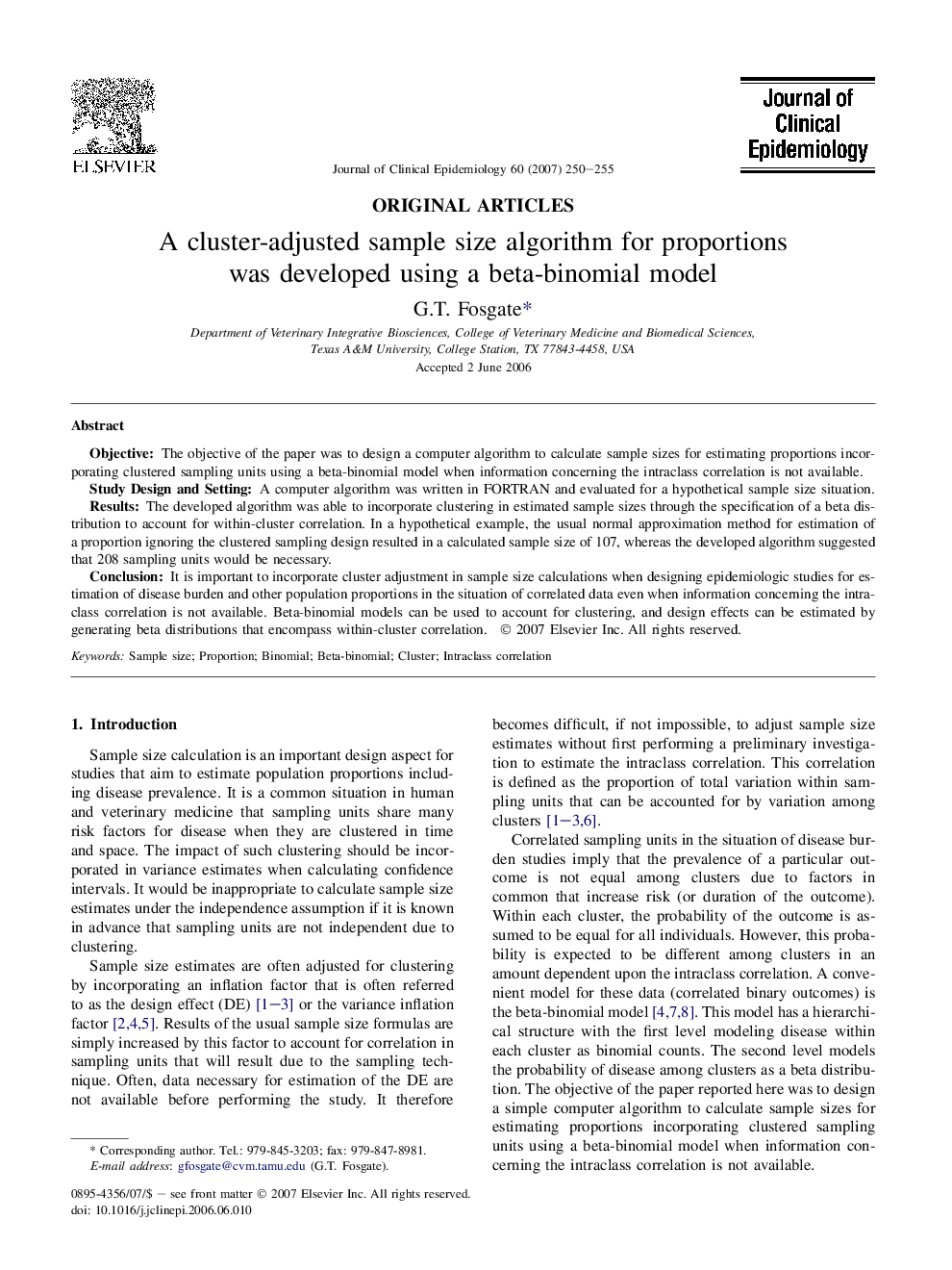| Article ID | Journal | Published Year | Pages | File Type |
|---|---|---|---|---|
| 1083127 | Journal of Clinical Epidemiology | 2007 | 6 Pages |
ObjectiveThe objective of the paper was to design a computer algorithm to calculate sample sizes for estimating proportions incorporating clustered sampling units using a beta-binomial model when information concerning the intraclass correlation is not available.Study Design and SettingA computer algorithm was written in FORTRAN and evaluated for a hypothetical sample size situation.ResultsThe developed algorithm was able to incorporate clustering in estimated sample sizes through the specification of a beta distribution to account for within-cluster correlation. In a hypothetical example, the usual normal approximation method for estimation of a proportion ignoring the clustered sampling design resulted in a calculated sample size of 107, whereas the developed algorithm suggested that 208 sampling units would be necessary.ConclusionIt is important to incorporate cluster adjustment in sample size calculations when designing epidemiologic studies for estimation of disease burden and other population proportions in the situation of correlated data even when information concerning the intraclass correlation is not available. Beta-binomial models can be used to account for clustering, and design effects can be estimated by generating beta distributions that encompass within-cluster correlation.
